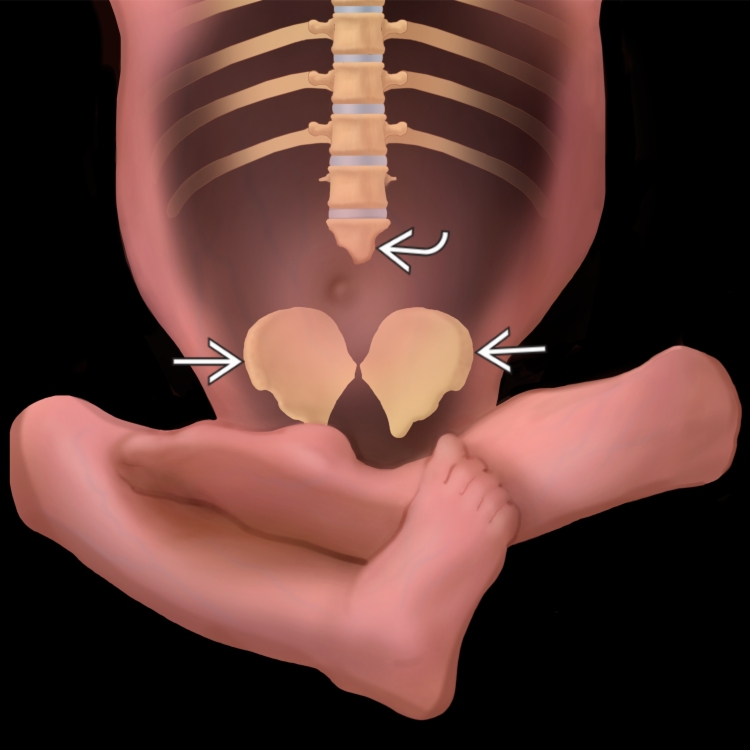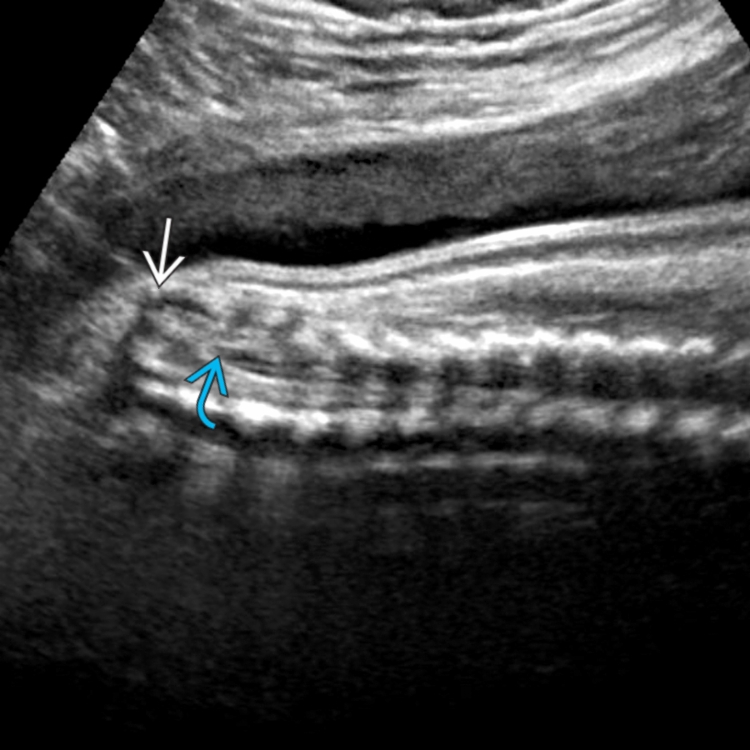KEY FACTS
Terminology
- •
Malformation complex characterized by varying degrees of developmental failure involving sacral and lumbar vertebrae and corresponding segments of spinal cord
- ○
Abnormal innervation affects lower extremity development
- ○
Imaging
- •
1st-trimester US findings
- ○
Short crown-rump length
- ○
May have increased nuchal translucency
- ○
- •
2nd- and 3rd-trimester US findings
- ○
Abrupt termination of spine on longitudinal views
- –
Looks as if spine has been rubbed out
- –
- ○
Because of absent sacrum, iliac wings are approximated or fused (shield appearance)
- ○
Lower extremity contractures and muscle wasting
- –
Crossed-legged tailor or Buddha pose
- –
- ○
- •
GI and GU anomalies common and often severe
- •
Open neural tube defect in up to 50%
- •
Congenital heart disease in 24%
Clinical Issues
- •
1% of infants born to diabetic mothers have caudal regression sequence (CRS)
- •
12-16% of infants with CRS have diabetic mothers
- •
Clinical outcome determined by level of defect
- ○
Neurogenic bladder, motor deficits common in survivors
- ○
Scanning Tips
- •
Always check for spine ossification centers in axial scan plane at level of iliac wings
- ○
Sacrum not well ossified until mid-2nd trimester
- ○
Mild cases easy to miss
- ○
- •
Can be seen at time of nuchal translucency exam
- ○
Should specifically target in any diabetic mother
- ○
Perform transvaginal exam looking for contour abnormalities of lower spine
- ○
 , absence of the sacrum, and medial positioning of the iliac wings
, absence of the sacrum, and medial positioning of the iliac wings  . The pelvis is foreshortened, and there is abnormal lower extremity positioning (crossed-legged tailor or Buddha pose) with muscle wasting.
. The pelvis is foreshortened, and there is abnormal lower extremity positioning (crossed-legged tailor or Buddha pose) with muscle wasting.
 . The conus of the spinal cord
. The conus of the spinal cord  is seen ending above that point.
is seen ending above that point.










